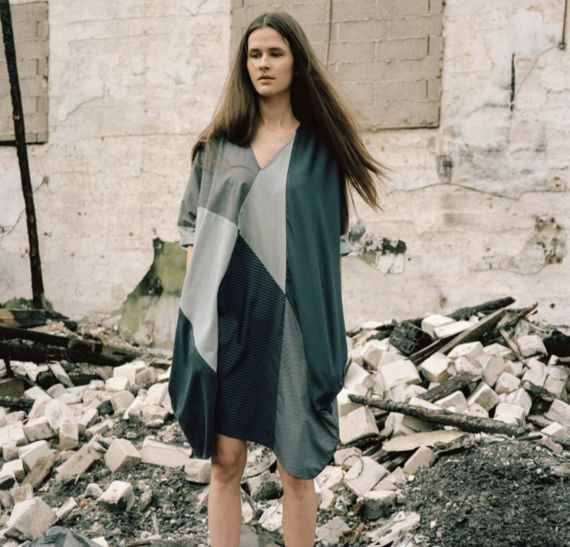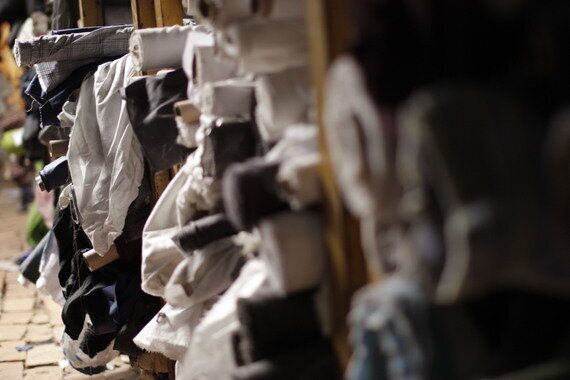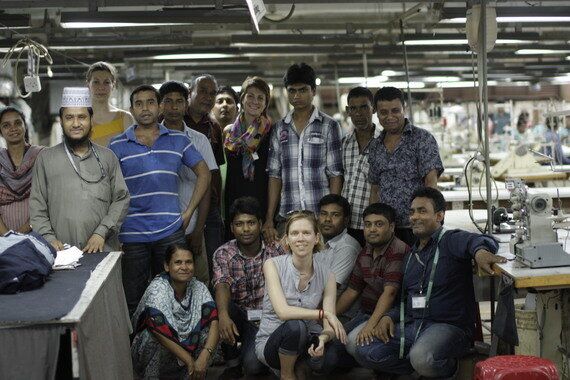I began working as a fashion designer in 1997. The deeper I got into the industry, the more shocked I was by the amount of waste my industry was producing. It didn't seem right. To do my small part, I began incorporating upcycling principles into my design work (both for my clothing line and the costume designs I was doing for theater productions). By 2002, all of the clothing I produced was upcycled.
Upcycling is a process that brings leftover materials back into the production cycle with the help of design. William McDonough and Michael Braungart provide a more formal definition in their book Cradle to Cradle: "The upcycling method, or upward re-processing, is defined as bringing waste back into the consumption chain through design by placing it higher up in the chain than it previously was - this includes environmental as well as commercial and aesthetical value - while also accounting for the product's future."

For many people, upcycling means diy projects, like turning champagne corks into succulent planters or old forks into coat hooks. This is really good, and my early collections were made this way. But over time, I came to realize that upcycling has the potential to be so much more. Upcycling can transform the textile and fashion industry. Through the course of my practice-based research as a fashion designer, I learned that clever design could dramatically reduce industrial waste. I developed a method - called UPMADE - that applies upcycling to mass production.
There are two kinds of textile "waste" -- post-industrial (the materials left over from the production of clothing) and post-consumer (the materials left over after clothes have been purchased and worn). DIY projects tend to use post-consumer materials, which are available in varying quantities and qualities. In order to make a full line of Reet Aus upcycled clothing with consistent quality, I began using post-industrial "waste" (cutting leftovers, rollends, overproduction, and rejected fabric).

To see if this method of mass-upcycling was having a positive environmental impact, I teamed up with environmental researcher Markus Vihma to get some scientific data on exactly how much waste was being reduced and how many resources were being saved through mass-upcycled clothing -- and the results were astounding. In three years (2013-2016), this mass-upcycling method (in comparison with the standard method of clothing production) saved 125,300 kWh of energy, 128,700,000 L of water, and prevented 130,955 pounds of CO2. Instead of sending 18,188 pounds of textiles to landfills, we used them. This is exactly the impressive impact I knew upcycling could have.
Mass-upcycling saves money and resources and provides many other benefits. It is still a new method, so it has not yet been widely adopted by the fashion and textile industry. Even without widespread adoption, we are making clear progress! There are now three factories in the world - in Estonia, Bangladesh, and India - certified to produce mass-upcycled products according to strict guidelines, with a fourth factory in India currently going through certification.

We have begun meeting with major brands to make them aware of the amount of leftovers and the possibilities they contain for increasing the revenue of their businesses. Brand by brand and factory by factory, we are making headway. There's a saying in Estonian - "kannatlikkus viib sihile" - that roughly translates into English as "patience leads to the goal". And I believe it!
This is the first article in a series about sustainability, upcycling and design in the work of Reet Aus. In the next post, Reet addresses environmental sustainability (how upcycling contributes to the circular economy model), as well as financial sustainability (how she runs a business within the context of a capitalist system).